
| Welcome to the Club of Amsterdam Journal. In case you would like to hear more and also share your thoughts, visit our next event about the future of Creative Agencies on February 19. C.L.E.A.R. Village Foundation‘s five-year collaborative design project is working to construct a real-life C.L.E.A.R. Village. By bringing together leading figures from a variety of disciplines, powerful and complete solutions can be developed. The village will offer excellence in social, environmental and economic sustainability to both residents and guests. The village will let businesses test innovative solutions and technologies in a real world situation, showcasing their most innovative work on a world stage. the C.L.E.A.R. Village Lab and the future of the Brain on March 19. Felix Bopp, editor-in-chief |
10 Formats: Agency Models of the Future

| by Alain Thys and Stefan Kolle, Futurelab An excerpt from the report Reconsidering the Advertising Industry. |
| […] #1 The Factory Earlier, we stated that agencies should break out of their factory mindset. But some agencies should do exactly the opposite. They should truly commit to being an “advertising factory”. Especially if they service international brands and are based in smaller markets. After all, many international brands do not seek creativity or even strong account management from every agency they work with. For example:A brand that already has a clearly defined position and “just needs an extra photo execution” doesn’t need a creative director and account manager to ‘really understand the brief’. It just needs a good photo job and someone who checks that the execution is on brand.The localisation of an international campaign often doesn’t requires any content input either. All that’s needed is a decent translation and good project management to support a local marketing manager to get the job done. Agencies who regularly face this type of work shouldn’t burden their structure and fees with needless creative and account management staff. They should transform themselves into factories that produce ads to order without substantially adding value to them. Their excellence lies in execution at a good price.Imagine A creative processing machine which consistently, efficiently and economically duplicates a brand identity on a global scale. All while taking into account cultural sensitivities and local management requirements. #2 Category Killer A: Media In spite of the industry glamour, advertising space is a commodity. It is sold in standardised, resellable units. Each of these units has various quality grades which differentiate their price. But as long as you stay in the “standard” model (which constitutes 90% of the business), it’s about eyeballs at a price. Thanks to raw financial muscle and strong management, media buyers have maintained their position as “gatekeepers”. But we can see the castle walls crumbling. (Digital) markets are getting more transparent by the day, and it will be only a matter of time before Google does get it right. That is why we strongly believe that there is a global first strike opportunity for a group of agencies which follows in the footsteps of Sabre or Charles Schwab. Rather than fight commodisation, such a group would embrace it. It would create an online buying platform where any accredited customer can directly buy (or resell) any advertising space at a fixed fee per transaction. This would create a totally liquid, transparent and responsive market for advertising space. Media agencies would then create value through the provision of strategy services, or by using their financial muscle to “buy and sell positions” similar as hedge funds do today. Imagine A web service which directly connects media and brands. Brand managers book their media space with the same ease they book an airplane ticket. Prices fluctuate with demand and space can even be sold on to other brands to ensure the market’s liquidity. The intermediary site gets paid a fee per transaction. #3 Category Killer B: Creative When it comes to creative work, agencies typically rely on a limited number of creative leaders to respond to client challenges and opportunities. They are often assisted by a limited group of (preferred) juniors & freelancers. Typically all live and work in the same 50 kilometer radius around the agency’s offices. In these days of the internet, open innovation and crowdsourcing, it doesn’t need to be this way. Using online tools and networking techniques, brands should be able to shoot their briefs into the world’s creative community. This should respond with input from the best minds from around the world. As most brands aren.t set up to deal with the chaotic influx of creative ideas, this creates an opportunity for a new type of agency. This brings together large groups of creatives into an online collective. Creative briefings are worked on by the collective, and the agency ensures everything stays “on brief”. Idea presentations are then done by the creatives involved through video-conferencing or other online means. The brand selects the best ideas for execution and the people who came up with them are selected with it. Idea refinement and execution are then a process matter. The agency receives a percentage or a fixed fee for facilitating the service. Imagine A digital environment connecting thousands of creatives from around the world. Through curators, brands introduce strategies and requests. The creative cloud collaboratively reacts and the best ideas, designs or executions emerge. Together with the curators, brands select. Future#4 Category Killer C: Production Agencies across the globe rely on (fairly) local networks and vendors to supply their customers. This can be efficient, but no matter how big the account, the scale of the effort remains limited. This while great efficiencies can be gained through international sourcing and supply management. For example, concentrating all agency orders of all clients (in all countries?) into a limited number of vendors can create massive economies of scale. Similarly outsourcing flash-game production, stock photography or illustrations to countries like Romania or Ukraïne can generate great savings. We believe that there is an opportunity for agencies to centralise production efforts across multiple markets and integrate vendors into a marketing supply chain. The benefits are multiple:Clients get better prices for the same quality of work.Agencies develop lighter cost structures as duplication of production departments can be eliminated.Concentrated purchasing power can ensure higher margins for agencies, even when prices drop. And most importantly, agencies develop a way to loyalise their clients by developing an ever greater purchasing power in the market place. Imagine A global production backroom which acts as purchasing aggregator for the advertising trade. Matching market demands with available production capacity, this ensures brands the absolute best prices at a given quality level. #5 The Customer Specialist In a world where customers rule it is more important to understand what drives them, than what constitutes the DNA of a brand. That is why we believe there is an emerging market for agencies that specialise in certain types of customer. That understand what these customers want from a brand. How they consume media and produce them. How they interact and behave. Brands that come to these agencies will benefit from an ever expanding pool of know-how and insights they can build on. And the quality of the work delivered will continuously improve. After all, if the agency truly focuses on it.s target customer base, it can start developing information relationships which go well beyond traditional bought media. It can integrate itself into the customer community. This way these agencies can build themselves a client base of non-competing brands which each target the same type of people. Provided services are of a high quality, these brands will be very cautious to discontinue the agency relationship. After all, giving up their spot will mean a competitive brand can immediately fill the void. All the knowledge the brand has jointly built with the agency will be lost. Imagine A company which has totally identified with a type of customer or market. Which knows everything about them, and has even gained their trust. Brands can call upon this company for knowledge and introduction to these customers. #6 The Serial Monogamist At the end of the day, the only thing a CMO really wants is an agency partner that truly understands his needs and fulfills them at a reasonable price. The concept of reasonable can even be flexible if the ROI is clear. The ultimate formula to achieve this is for agencies to develop a total symbiosis with their client. To become .from the client.s perspective -a one-client or even in-house agency. In this model, the agency fragments itself into a number of small teams which work exclusively on a client account, ideally on the client premises. These teams totally identify with the client.s operation to the point that they become a de facto part of the marketing team. Without ever showing up as headcount. The extremely lean central agency co-ordination centre ensures each team remains sharp, has access to the latest agency management techniques and provides the purchasing power when the need arises. The extreme form of client-integration (backed with a few strong contracts) can thus ensure premium compensation for all involved and maximum value delivered for the client, which in turn translates into long-term loyalty. Imagine An agency totally dedicated to one client, and one client only. It knows everything about the client.s market and brand, as well as the way it operates. In return for this dedication it also shares in the brand.s success it helps create. #7 The Communication Boutique No matter how well-intended they may be, incumbent agencies will be hard pressed to become true solution houses. The people and business model changes that are required are simply too big. But the client needs for a business-driven, media-agnostic advisor, will not go away. And while strategy consultants like McKinsey, Bain or Booz have the intellectual power to fulfill this role, they struggle to connect with the predominantly right-brained marketing community. This opens up an opportunity for communication strategy boutiques that service clients with strategy advice and agency co-ordination services. They do not get involved in any form of execution, buying or even creative work. They do focus on helping the marketing executive to do what is right when it comes to connecting with his target customers. These boutique agencies will not become big in the sense of traditional advertising agencies and their structure will probably resemble that of a professional services firm. But their influence in the future marketing and communication landscape will only increase. Imagine A high end consultancy focused on marketing communication. Understanding strategy, ROI, money, people alignment. Briefing agencies on behalf of the brand, and making sure they deliver. High price, but also high value. #8 The Craftsman Some agencies are simply very good at one specific job. They make TV ads. Do online games. Develop mobile applications. And just like good craftsmen, they will never want for work. But they have to be clear. They need to eliminate all activities that do not belong to this core and spread the word that they are happy to work for anyone anytime, as long as it fits their core skills. And because of this focus, they can further increase their skills and margins. Just like the specialist lighting or editing houses in the film industry, this allows them to work on multiple – often competing – projects. To build a sustainable business purely on skill and reputation. Imagine A boutique which unites the best on the planetwhen it comes to one discipline. And only that discipline. They work for everyone who needs their expertise. #9 The Fragmented Giant Many of the opportunities described in this document will seem too limiting to the large groups of today. An alternative strategy for them is to simultaneously pursue all of the opportunities we describe. But not by changing their existing business. It would be certain suicide to simultaneously attempt to fragment and challenge business models, enhance the strategy functions, streamline operations and deep-dive into consumer and B2B customer behaviour. In stead, large agency groups can build themselves a new reality by keeping their current business intact, and building a new one on the side. Like a portfolio manager, they can regularly transfer good assets from the old reality into the new one and divest those who do not fit their revised future. The funds these divestments generate, can be re-used for new projects. This way, agency groups fulfill more than ever the role of holding companies that allocate resources where they generate most sustainable revenue. And from large group monoliths, they can become fragmented giants. Imagine A holding company which lets go of the industry myopia and ruthlessly reviews its current agency portfolio . Based on the various models that are possible, it leverages its financial and operational strength to create a new and powerful mix. #10 The Persistent One Finally, there is an opportunity which may seem counter-intuitive, but which can be quite profitable. This is to consciously disregard the market.s developments and simply stay on course until it becomes untenable. This last man standing strategy can be applied by agencies where the existing infrastructure and people composition is simply too challenging to change. In these cases it may be more profitable to start harvesting the agency and its brand name. This means that every year costs are reduced to a level that ensures profitability, even if it leads to a gradual erosion of quality. Agencies that are in a similar position are actively targeted for acquisition, so revenues can regularly be boosted and extra profits obtained. This process is repeated until the ship finally sinks. Imagine A smart, traditionally minded agency which focuses on smart, traditionally minded clients. These slowly disappear, yet for the years that come, can remain quite profitable. The full report is available click here |
Next Event

the future of Creative Agencies
Thursday, February 19, 2009
Registration: 18:30-19:00, Conference: 19:00-21:15
Location: Platform 21, Prinses Irenestraat 19, 1077 WT Amsterdam
The conference language is English.
Supporter:Info.nl
Our speakers are
Jann C. de Waal, Managing Director, Info.nl
A new breed of creative agencies
Paul Hughes, Strategic Director and Partner, Lava graphic studios, Coach to the Creative Class
Design for change
Robert Marijnissen, Programme Manager, Creative Cities Amsterdam Area (CCAA)
The City as a Creative Agent
Jochem Leegstra, Founder, Creative Director, …,staat creative statements
Moderated by Seth van der Meer, Creative Director, Sandfire b.v., Chairman, NLGD Festival of Games
Club of Amsterdam blog

News about the Future

| Instead of getting an MBA, consider spending six months in my office Seth Godin is running an alternative MBA program that has, at its heart, a new vision of learning about being a businessperson. Nine participants are currently learning about entrepreneurship, freelancing and marketing in a practical, real world apprenticeship with Godin rather than going the traditional business school route. |

Google is in the final stages of fine-tuning their free PowerMeter software, set to inform users on just how much energy appliances use and comparing their energy consumption with that of their neighbours.”Our lack of knowledge about our own energy usage is a huge problem, but also a huge opportunity for us all to save money and fight global warming by reducing our power usage. Studies show that access to your household’s personal energy information is likely to save you between 5–15% on your monthly bill, and the potential impact of large numbers of people achieving similar efficiencies is even more exciting. For every six households that save 10% on electricity, for instance, we reduce carbon emissions as much as taking one conventional car off the road.”
C.L.E.A.R. Village Lab
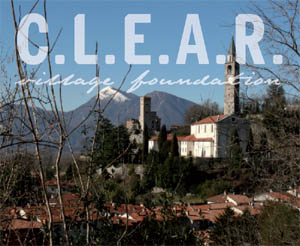
C.L.E.A.R. Village Lab
co-design a real-life sustainable village
In a nutshell
C.L.E.A.R. Village Lab is a collaborative design event: C.L.E.A.R. Village Foundation‘s first step to co-create a groundbreaking sustainable village. A ‘dream team’ of up to 100 professionals from complementary industries will be assembled, working together to produce a replicable blueprint. Involvement will push your sustainability work far beyond your existing experience.
Your participation in the project will confirm your valuable contribution and commitment to sustainable design, as well as connecting you with other key figures in the arena. As you bring one of the world’s most inspired eco-design projects to life, you will gain a rewarding and memorable experience that will bring you prestige, insight and new business opportunities.
C.L.E.A.R. Village Lab experience
C.L.E.A.R. Village Lab is immersive and intense. Putting participation first, the schedule will evolve organically, guided by four renowned thought leaders. With no rigid structure or scheduled breaks, the team can set its own agenda, working on the areas it finds most rewarding and synergetic.
Working towards a physical outcome, we start with as few preconceptions as possible. This will let the team build in sustainable systems and designs from the ground up. Starting with the bigger picture, the team will drill down to specific components and features.
During group work and discussion, C.L.E.A.R. Village‘s illustrators will bring concepts to life on the fly. Other real-time technologies, such as live text feedback and collaborative 3D modelling, will enhance communication and engagement.
C.L.E.A.R. Village Foundation will then act on the decisions of the team, moving the project forward to its next phase.
Great Androids
Geminoid is a remote-control doppelganger droid designed by and modeled after Hiroshi Ishiguro, professor at Osaka University and researcher at ATR Intelligent Robotics and Communication Laboratories.
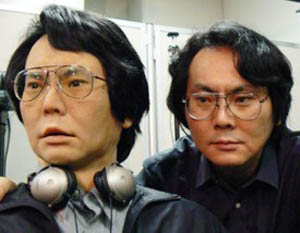
Toyota’s third model is easily one of the most unusual robots. This model is called the mountable version. It is basically a chair which can WALK! WOW! What a concept! It stands 1.8 m (6′) tall and weighs 75 Kg (165 lbs). Notice that the person in the chair is wearing a crash helmet. One hopes that the helmet will not be necessary.
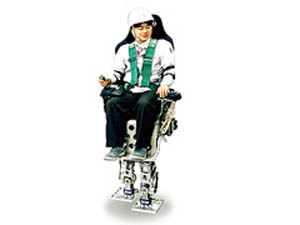
A dental training robot called Simroid has been introduced by Dr. Naotake Shibui, of the Nippon Dental University in Tokyo, who collaborated with technicians at Kokoro Co. to develop the robot. It looks very human and even squeals in pain when the trainee makes a mistake
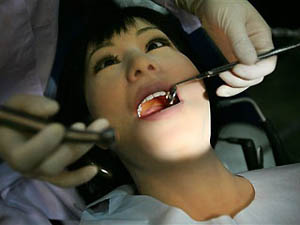
Here is the first Iranian android. It is called Firatelloid (First Iranian Intelligent Humanoid). They have some movies on their multi-media page. The principal developers are Mohamad Shayganfar and Benjamin Fonooni from the Azad University of Arak. (Arak, Iran).
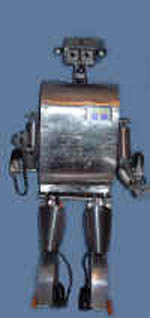
Recommended Book
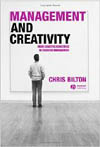
Management and Creativity: From Creative Industries to Creative Management
by Chris Bilton
This book explores the relationship between the management of creativity and creative approaches to management.
- Challenges the stereotypical opposition between ‘creatives’ and ‘suits’.
- Draws on the work of management theorists such as Mintzberg and Porter and creativity theorists such as Amabile and Boden.
- Draws on the practical experience of individuals working in the creative industries.
How China, A Rising World Power Deals with the Current Crisis and Challenges Facing the World

By Professor Xinhua Zhang
The Center for Policy and Strategic Studies of Shanghai Academy of Social Sciences
And
Shanghai Vision Consultants Co., Ltd.
SCG Think TankKeynote: International Security Conference, Munich, Germany, February 2009
Having the future of humankind in mind, we have to be aware that we are facing several closely interrelated and interlinked major challenges:
1. Sustainable development of the world economy as threatened by the volatility of financial markets, due to the prevailing short-term profit interest of share-holder value attitude bestowing the capital markets with a casino character.
2. Intensifying scarcity of natural resources, especially the scarcity of fossil energy supply, which is of crucial importance for the transformation-process to a sustainable economy not only because of the risks of global warming, but also the finiteness of fossil energy resources, especially of oil and gas, in the last decades being the main energy-supplier for economic prosperity.
3. Severe situation of environmental destruction and increasing climate change, which is forcing us within the next two decades to set a new course to develop a global economy dramatically dematerialized by introducing resource-efficient technologies and more immaterial-oriented life-styles.
4. Social justice and actual and potential conflicts for survival triggered off due to the scarcity of natural resources and worsening of some social stratus and groups on the global level, which accompany the processes of urban agglomeration to result in a Planet Slum. The spread of terrorism is one of the manifestations.
To sum up, we are facing growing complexity, acceleration and uncertainties. Consequently, whenever we try to elaborate on perspectives and visions of the world of tomorrow, we will have to exploit all our knowledge and ingenuity combined with trans-disciplinary efforts to develop scenarios giving substance and inspiration to the public debate and the decision-makers.
Hence sustainable social and economic development and political stability asking for good governance from local especially urban to global level will constitute a crucial challenge to the world community, including business (corporate) community, the prospects for this endeavour not looking favourable in view of the broad variety of conflict potentials and the deterioration of state authority and governance. Much will depend on the willingness and ability of the old and new big powers jointly facing these risk factors to agree to a multi-polar conflict-management and multi-lateral co-operation.
In this regard, it is a good question to ask: How China, a rising, or emerging world power, or in other words, a global player, deals with the current crisis and challenges facing the world?
A Brief Profile about China’s Overall Situation and Challenges
China’s Achievements as a Global Player
China is a typical large country with comparatively low reserve of natural resources, and is standing in the middle spot of steps of population redoubling with the greatest base and the highest speed of growth.
As an accepted emerging world power, or global player, China has maintained good house-keeping function and has good performance in handling its own affairs and makes progress each day for its own social and economic development. At the same time, China has also impressed the international community by resuming responsibility for global affairs and contributing comparatively largely to international stability and global development (economic and business development).
China’s Foundations of Development
Until 2008, the basic lifeline of Chinese economy has mainly depended on two foundations: one is high national saving; The other is the traditional model of extensive development and incentive foreign trade policy, coupled with the system of compulsory foreign exchange. Now China owns a reserve of over $ 2 trillion of foreign exchange and in equal terms issues about 12 trillion Yuan.
The above two foundations make it possible for China to establish the most active mechanism of capital accumulation without wars and developed its capital markets. Moreover, in recent years, main commercial banks have gone public across boundaries and completed the benign operation of the accumulation system. This “deposit-credit system “, combined with export-oriented economy, reflects a special structure in which China accumulates wealth by investment driving economic growth and relying on international markets, and also shows the weakness of Chinese credit sources and the underdevelopment of its growth mode leading to the vulnerability of its economic and ecological systems. Adding to this is the corruption of civil servants which accompanies high growth rate and institutional flaws.
Threats and Challenges Facing China
Many have rightly pointed out that, in short run, problems of ecology and environment have become the most protruding challenges to sustain China’s economic development; in longer run, ecological deficit and resource scarcity as well as the accompanying social problems increasingly extend to pose the greatest threat to future survival of the economy and the stability of the society.
This situation has naturally brought to attention the issue of sustainability, which questions whether China can sustain its development and maintain high growth rate in both short and longer terms and whether China can successfully handle the transition to a more open, stable and equitable society.
The new situation, especially the unfolding global crisis and challenges pushes China to embark on a new road of unprecedented and far-reaching revolution in its institutions and policies, as well as business governance and development..
In the following, I present some of my reflections to the questionraised by the organizer of this conference from three challenge areas: the unfolding global financial crisis, the issue of energy and climate change, and food.
Chinese Approach to Tackle the Global Financial Crisis
Performance of China’s Economic Wellbeing under the Global Financial Crisis
The special features of the present global financial crisis: ………
Assessing Impacts of Global Financial Crisis on China
In general, the Global financial crisis has so far had comparatively minor impacts on China. Chinese financial firms have bought small amount of American sub-prime lending products, although some of them increases certain commercial risk because of having bought bonds issued by investment banks of Wall Street. Moreover, data shows that China is the greatest holder of American government bonds in the world. But in total the Chinese sovereignty foundation has not fallen into the trap. Therefore, Chinese government does not have to worry too much about this issue in the near future.
But the indirect impacts should not be overlooked. As others China stands to suffer from the adverse consequences of any US recession, even though China’s economic growth has become more broad-based and more resilient than in the past. In the short run, it will not be easy for China to boost domestic demand to offset the unfavourable external disturbances. If the expected US recession is mild and short-lived, it could provide “some welcome cooling agent to the hot Chinese economy”. However, China, like other economies, cannot escape unscathed from a prolonged and severe US recession. So from the macroeconomic perspective, China’s economic cycle has obviously left the gold growth phase of “high growth and low inflation”, evidences of deflation and economic setback are emerging on the horizon.
- Recent downside catastrophe of the stock exchange market
- Decreasing consumer confidence and gloomy expectance on the economy, bringing about the down-sliding trend of real estate business (investment and sale)
- Serious setback and difficulties of China’s export business, resulting in huge employment in export related companies and some foreign investment companies
- Weakening market demand and difficulties in business operation and performance deterioration indicating macro economy cooling down, growth of Chinese economy slowing and entering a downward trend
Prospects of China Getting out of the Crisis
Despite of the above difficulties, generally speaking, the growth trend of Chinese economy will not change. Its prospects look still promising, although the pace will be slowed down in some mild way. The rationale includes the following:
- The difficulties Chinese economy is faced with are the ones inherent in the processes of advancing. China has rode onto the speed track of economic growth based on real economic fundamentals. It has experienced substantial productivity gains during its recent spurt of high growth, which lays foundation for new spurs.
- China does not have to worry about new investment projects and new growth points. China’s industrialization and urbanization is just in the middle of the course. China is now one of the countries with income below middle level, and its urbanization and industrialization require a large amount of investments in infrastructures.
- China’s position as the world’s manufacture base will not change. It is hard to find a country in the world which has very excellent chains and manufacturing bases to serve the world market.
- Having a large economic volume with rather good quality and remaining intact substantially in the face of global turbulence, Chinese economy is less vulnerable to the crisis. Thanks to the immensity of its territory and different economic development phases, China has more and larger rooms for the central government to solve financial difficulties and spread crisis.
- Increasingly mature macro-regulation measures provide for continuously rapidly developing economy with important guarantees.
The present situation in China testifies my viewpoints. The Chinese premier Wen Jiabao said last week in London that there have appeared signs of Chinese economy beginning to recover.
Then, how China achieved all these?
Futurist Portrait: Jacque Fresco
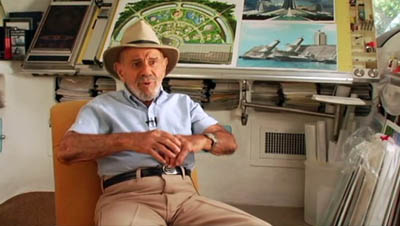
Jacque Fresco is an industrial designer, author, lecturer, futurist, inventor, and a pioneer in the field of human factors engineering. Mr. Fresco has worked as both designer and inventor in a wide range of fields spanning from biomedical innovations to totally integrated social systems.
The Venus Project and the non-profit organization Future By Design reflects the culmination of Jacque Fresco’s life work: the integration of the best of science and technology into a comprehensive plan for a new society based on human and environmental concern. It is a global vision of hope for the future of humankind in our technological age.
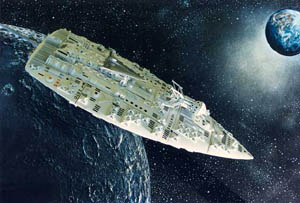
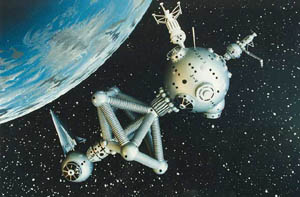
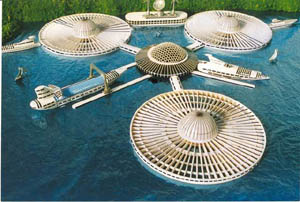
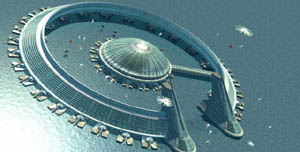
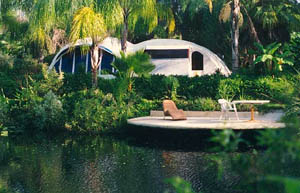
Future by Design shares the life and far-reaching vision of Jacque Fresco, considered by many to be a modern day Da Vinci. Peer to Einstein and Buckminster Fuller, Jacque is a self-taught futurist who describes himself most often as a “generalist” or multi-disciplinarian — a student of many inter-related fields. He is a prolific inventor, having spent his entire life (he is now 93 years old) conceiving of and devising inventions on various scales which entail the use of innovative technology. As a futurist, Jacque is not only a conceptualist and a theoretician, but he is also an engineer and a designer.
Future By Design trailer of the film on Jacque by William Gazecki.
Agenda


Our Season Program 2008 / 2009:
| Febuary 19, 2009 18:30-21:15 | the future of Creative Agencies Location: Platform 21, Prinses Irenestraat 19, 1077 WT Amsterdam | |
| March 19, 2009 18:30-21:15 | the future of the Brain Location: De Waag, Nieuwmarkt 4, 1012 CR Amsterdam [Center of the Nieuwmarkt] | |
| April 23, 2009 18:30-21:15 | the future of Games Location: | |
| May 2009 | the future of BioMed Location: | |
| June 2009 | the future of Connectivity Location: London |
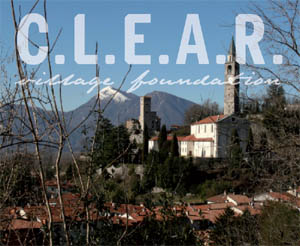
| C.L.E.A.R. Village | ||
| June 4–6, 2009 | C.L.E.A.R. Village Lab Location: Institute of Advanced Architecture, Barcelona, Spain | |
| September 1–2, 2009 | C.L.E.A.R. Village Forum Location: DGI-byen, Tietgensgade 65, DK – 1704 Copenhagen V, Denmark |









Customer Reviews
Thanks for submitting your comment!